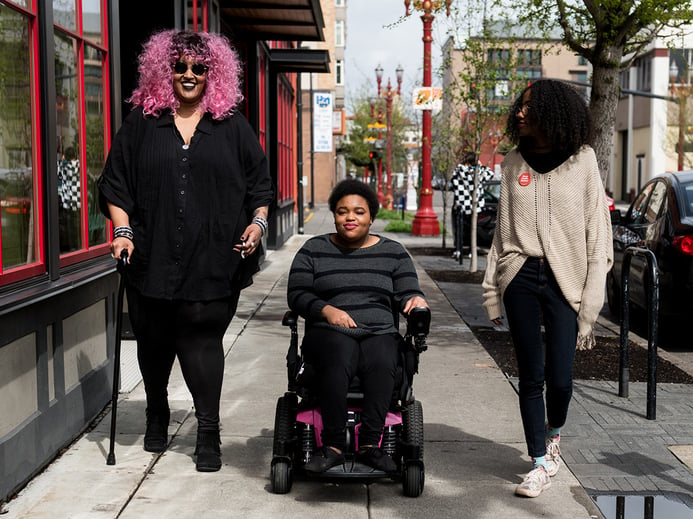
As the digital landscape continues to change and modify, accessible and inclusive UX web design is more important than ever. Did you know that 15% of the world's population lives with a disability? What an incredible opportunity to increase your audience, meet the unique needs of others, and further your product’s reach by making it more accessible. To achieve this, organizations are adopting inclusive design practices. “Inclusive design,” or what is sometimes referred to as “universal design,” aims to create products and services that are usable and accessible for all people, regardless of their culture, gender, education, location, age, physical ability, and experience.
Designing with accessibility and inclusion in mind starts with clearly understanding your design’s purpose, identifying which groups of people you may be excluding, and fostering a growth mindset to continuously adapt your product for users.
The key to fostering inclusion is a diverse team of designers, developers, and testers who can scale your product to reach diverse audiences around the world.
Understand your personal biases and target audience
Let’s say you want to design a dishwasher. When developing your product, there are countless questions to be considered. Let’s start with the most obvious. Who specifically is going to be using your product?
Before developing your product or service, identify who your primary audience is. What characteristics do they have? And then begin to think about your own biases and assumptions that may influence the design as you move forward.
While it’s good to have a target customer in mind, it’s equally beneficial to understand whether you’re barring any potential buyers from using your product based on the user experience or interface you are creating. Maybe you realize that your dishwasher idea works well for you, but people with visual impairments or who are hard of hearing may struggle with some of its functionality.
When someone knowingly induces their own biases, limitations, and capabilities, they can use this information as a launch pad to better understand, empathize with, and serve marginalized audiences. It also helps designers begin cultivating a growth mindset, approaching inclusive user experience as an ever-evolving process.
Foster inclusivity in design
Now that we’ve identified our audience and have addressed our own biases and assumptions, it’s time to assemble a diverse design team, spend time prototyping, and create diverse user testing groups. When we actively gather perspectives from people of differing backgrounds, abilities, and identities, we’re more likely to have one person identify a gap that may have been missed by everyone else. Maybe your dishwasher design team develops fantastic ideas for those needing visual and hearing accommodations, but someone on the team with one arm discusses how difficult it would be for him to operate certain features. This vital input is where growth and innovation bloom.
Understanding accessibility gaps can help lead to greater innovation, improving usability and increasing user adoption. In fact, by ensuring the design of a dishwasher accommodates individuals with one arm, you unknowingly benefitted other groups of people, including mothers who need to hold their babies, folks who may have a broken arm, or even someone with limited mobility. Paying attention to an individual’s unique need could end up positively impacting the entire project’s reach.
Continue growing and learning
The most fantastic aspect of diversity and inclusion in user experience is the fact that you are dramatically expanding your reach. Giving someone with a disability the chance to fully interact with your dishwasher in the same way that someone who does not have a disability can, is magical. We gave the example of a mother loading dishes who unintentionally benefited from design accommodation but think of the endless ripple effect each innovation will have on our population.
You may set out to reach just a portion of the 15% living with a disability, but unknowingly impact a much larger audience. By trying to solve one problem, you solve several. Overall, the quest to include everyone will require indefinite learning and growing. As you continue to pioneer product inclusivity, it’s helpful to turn to resources like Microsoft’s Inclusive Design and the nonprofit company, IDEO Design Thinking, for guidance. In the end, our greatest hope is to continue improving how users engage with our offerings through thoughtful, inclusive design.